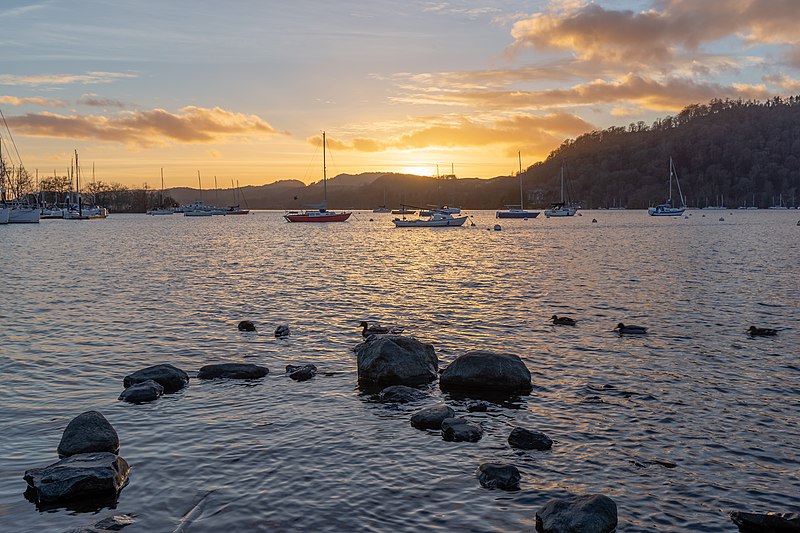Deep Water follows the lives of three women, Lisa, Kate and
Roz, all living among the beautiful scenery of the Lake District, but whose
lives are considerably less perfect than the surrounding landscape.
Much of the filming took place around Lake
Windermere, which forms a watery backdrop to many of the scenes.
Which is appropriate enough, as the series is
based on the Windermere series of novels by Paula Daly.
 |
| Sunset in Bowness Harbour, Bowness On Windermere, England. Photo by Michal Klajban, via Wikimedia Commons. |
One of the most striking properties used in the filming is
the house where Kate (Roslind Eleazar) lives, set in an elevated position
overlooking the lake.
The real-life
property is near the village of Hawkshead, near the western shore of the
lake.
Anna Friel’s character Lisa,
meanwhile, lives in the countryside near the lake.
The
kennels she runs are seen surrounded by the dramatic slopes which are a feature
of this area.
Roz’s house is in the
village of Staveley, a couple of miles to the east of the lake along the
A591.
Staveley Primary School was used
for the school gate scenes which form the common denominator between the three
women.
There is a lakeside cafe which in the series is where Roz’s
brother works and which is the scene of a number of meet-ups such as in episode
1, where Kate meets Lisa to discuss her son’s bullying.
The cafe which was used for these scenes is
the
Bluebird Cafe on Coniston Water, named after the jet-powered boat which
killed Donald Campbell as he attempted to break the water speed record on the
lake in 1967.
 |
| Bluebird Café - geograph.org.uk - 900291. Photo by David Palmer, via Wikimedia Commons. |
Lake Windermere is the largest of the Lake District lakes,
as well as being the largest natural lake in England.
The main tourist centres are Bowness-on-Windermere
and Ambleside, and there are frequent departures on
leisure boats linking the
two, as well as Lakeside at the southern end.
Coniston Water is a short distance to the west of Lake Windermere.
The National Trust runs trips on the restored
Steam Yacht Gondola, which leaves from a pier near the Bluebird Cafe.
Hawkshead is a village a short distance from
the west shore of Lake Windermere with a good range of pubs and cafes, as well
as an array of shops, including a large branch of the
Hawkshead outdoor
clothing and equipment chain.
Map of the area.


,_Aged_31_John_Opie_(1761%E2%80%931807)_Keswick_Museum.jpg)










